Galaxy S9 vs Pixel 2: What's the Best Android Phone?
Do Samsung's new Galaxy S9 and S9+ leapfrog Google's best handsets? We put the phones head-to-head to find the answer.

Samsung's next generation of premium Android flagship devices have arrived, but do they beat Google? Based on our Galaxy S9 and S9+ review, these handsets offer much improved cameras, faster performance and a ton of special features. The designs are even slightly sleeker than before.
Meanwhile, the Pixel 2 and Pixel 2 XL come packed with all kinds of goodies, from a killer camera with object recognition to a squeezable body that triggers Google Assistant. Now that we've had a chance to use all of these phones extensively, here's how the Galaxy S9 stacks up against the Pixel 2.
Galaxy S9 vs. Pixel 2: Specs Compared
| Phone | Galaxy S9 | Galaxy S9+ | Pixel 2 | Pixel 2 XL |
| List Price | $720-$800 | $840-$930 | $649 | $849 |
| OS | Android Oreo | Android Oreo | Android Oreo | Android Oreo |
| Screen Size (Resolution) | 5.8 inches (2960 x 1440) | 6.2 inches (2960 x 1440) | 5 inches (1920 x 1080 pixels) | 6 inches (2880 x 1440 pixels) |
| CPU | Snapdragon 845 | Snapdragon 845 | Snapdragon 835 | Snapdragon 845 |
| RAM | 4GB | 6GB | 4GB | 4GB |
| Storage | 64GB | 64GB | 64GB, 128GB | 64GB, 128GB |
| Rear Camera | 12-MP Super Speed Dual Pixel (f/1.5, f/2.4) | 12-MP Super Speed Dual Pixel (f/1.5, f/2.4); 12-MP (f/1.5, f/2.4) and 12-MP (f/2.4) | 12 MP (f/1.8) | 12 MP (f/1.8) |
| Headphone Jack | Yes | Yes | No | No |
| Battery | 3000 mAh | 3500 mAh | 2700 mAh | 3520 mAh |
| Battery Life (Hrs:Min) | 10:52 | 10:59 | 11:07 | 12:09 |
Cameras
Samsung has bet big on the S9's cameras to compete not only with the Pixel 2, but also Apple's iPhone X.
The Galaxy S9+ sports an impressive dual-lens rear-facing camera, which neither of Google's Pixel handsets have. The secondary lens enables the same tricks it does in the Note 8, including a Live Focus mode for bringing objects into focus while blurring the background. The S9+'s telephoto lens also supports optical zoom.
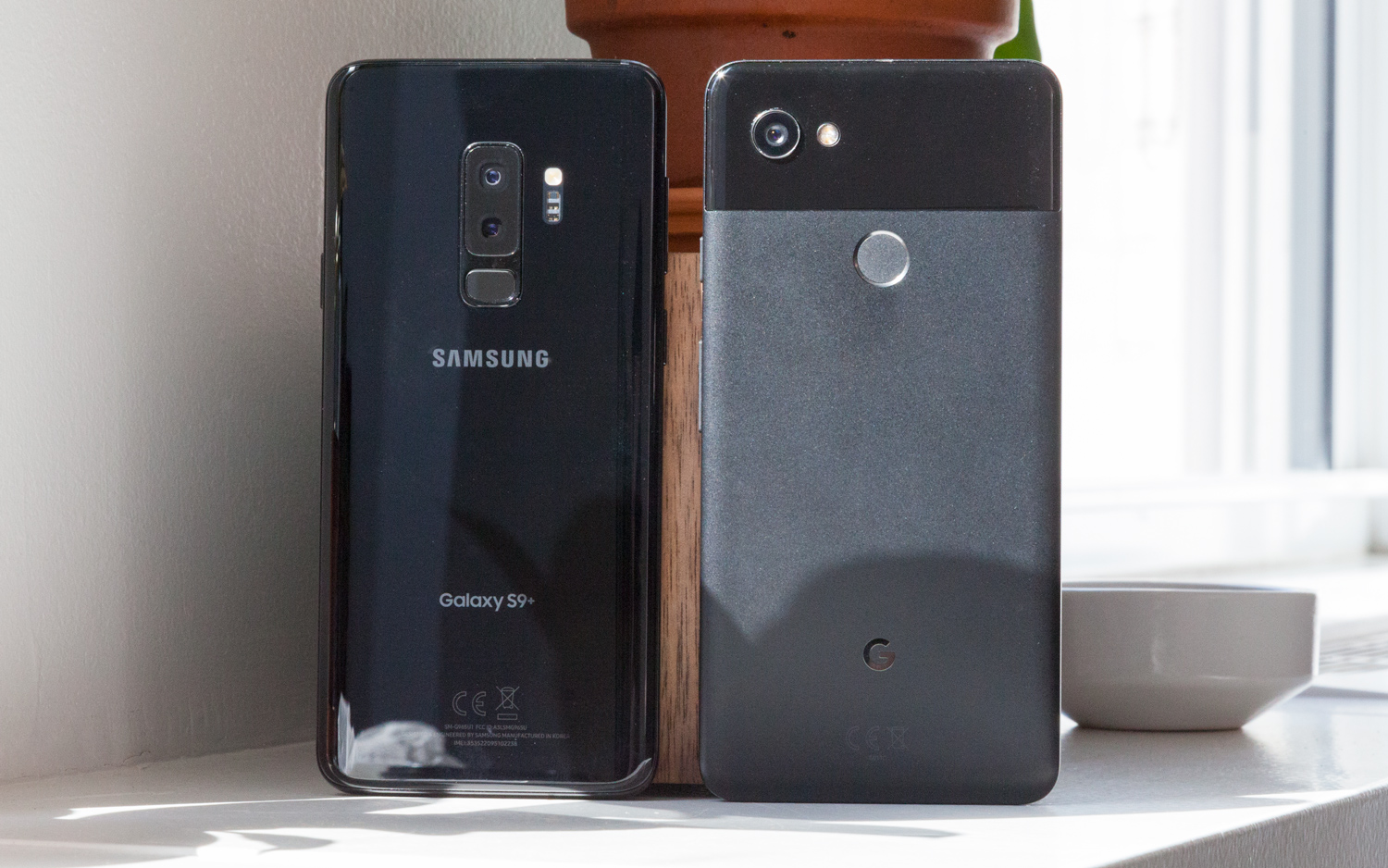
Both the Pixel 2 and Pixel 2 XL pull off portrait shots with a bokeh effect using software, but you can't adjust the effect as you can with the Galaxy S9+. Neither of Google's phones offer optical zoom.
Samsung has now added an adjustable aperture to the S9's main shooter, which can automatically open from f/2.4 to f/1.5, the widest of any smartphone ever. A new slow-motion video mode also allows the camera to sense fast movement and slow it down to 480 frames per second.
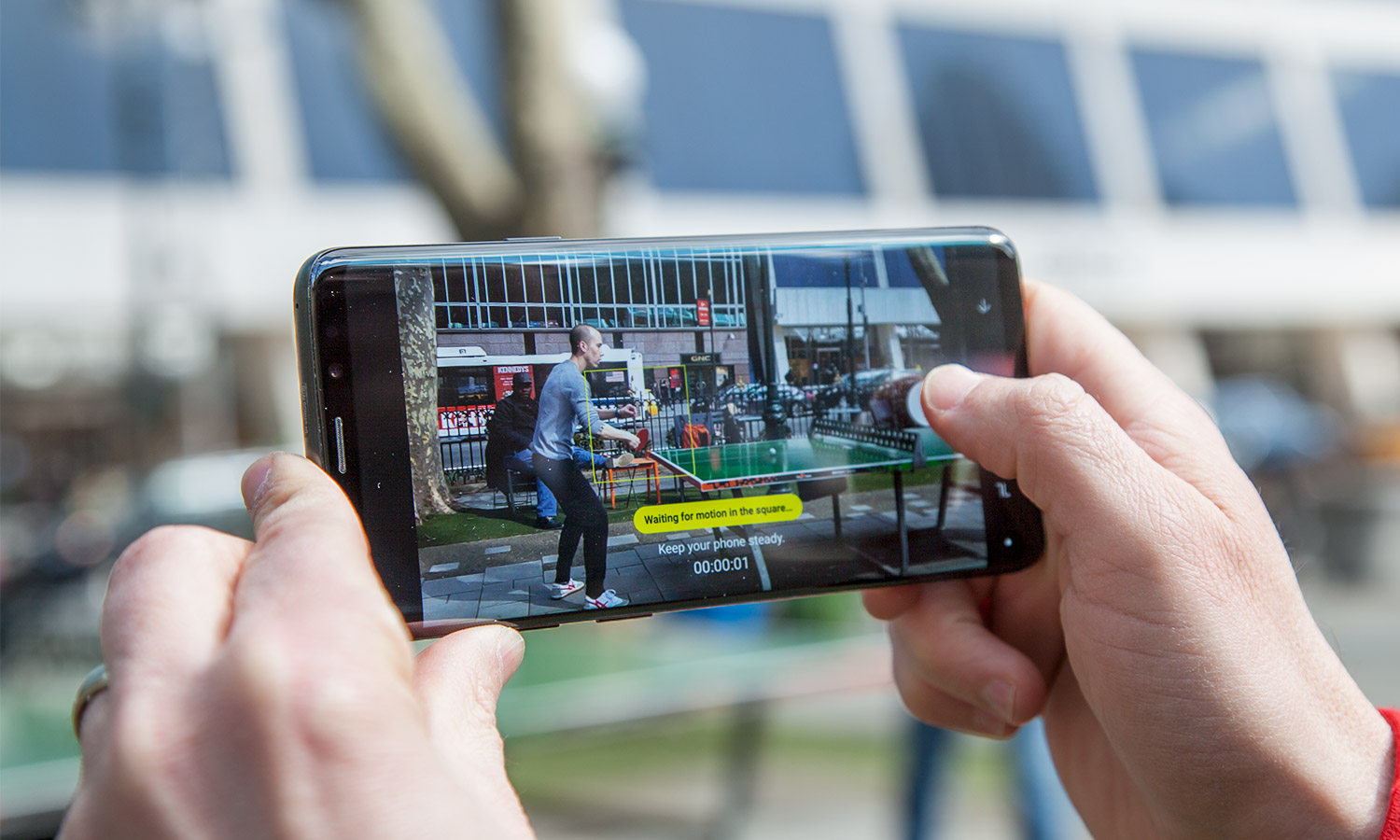
As noted above, the Pixel 2 and Pixel 2 XL sport a single 12-MP lens, but Google relies on software to pull off the same portrait effect you'll find on dual-lens phones and that we expect to see in the S9+. The downside to Google's approach: You can only see the blurred effect after you take the photo instead of in preview mode like on the the S9+.
Get instant access to breaking news, the hottest reviews, great deals and helpful tips.

Putting both shooters head-to-head, the Pixel 2 appears to favor more balanced photos, with less details lost to shadows and highlights than Samsung’s flagships could manage. In these shots of Grand Central Terminal, our Pixel 2 better exposed the dimmer sections of the frame as well as the harsh light breaking in through the window. The white balance was perhaps a tad more saturated on Google’s phone than would have been realistic, but it contributes to a better, more dramatic looking photo than the muted, gray tones of the S9’s rendition.
Comparing this pair of portraits of my colleague Mike, the Pixel 2 once again produced an image that struck that hard sought-after balance between over- and underexposure. The Galaxy S9+ delivered an universally brighter shot, but lost some detail in Mike’s face due to the intense sunlight. However, I prefer the tighter perspective offered by the Samsung’s telephoto lens, and the Galaxy managed a better job of separating the foreground from the background in applying the shallow depth-of-field bokeh.
These dueling shots of fruit show how close the two cameras are in terms of performance... and how, ultimately, the Pixel 2 XL edges out Samsung's phone. The photo taken by the Galaxy S9+ pops, with a noticeably brighter look than the dark Pixel 2 XL shot. However, Google's phone did a better job at capturing colors, particularly the orange of the persimmons in the foreground.
For more on how these cameras compare, see our camera phone face-off, which also pits these two phones against the iPhone X.
Winner: Google Pixel 2
Design
If you like the look of the Galaxy S8 and S8+, you're in luck: Both versions of the S9 look almost identical to last year's models. The Infinity Display we loved in the S8 returns in the S9, but now it's even brighter.
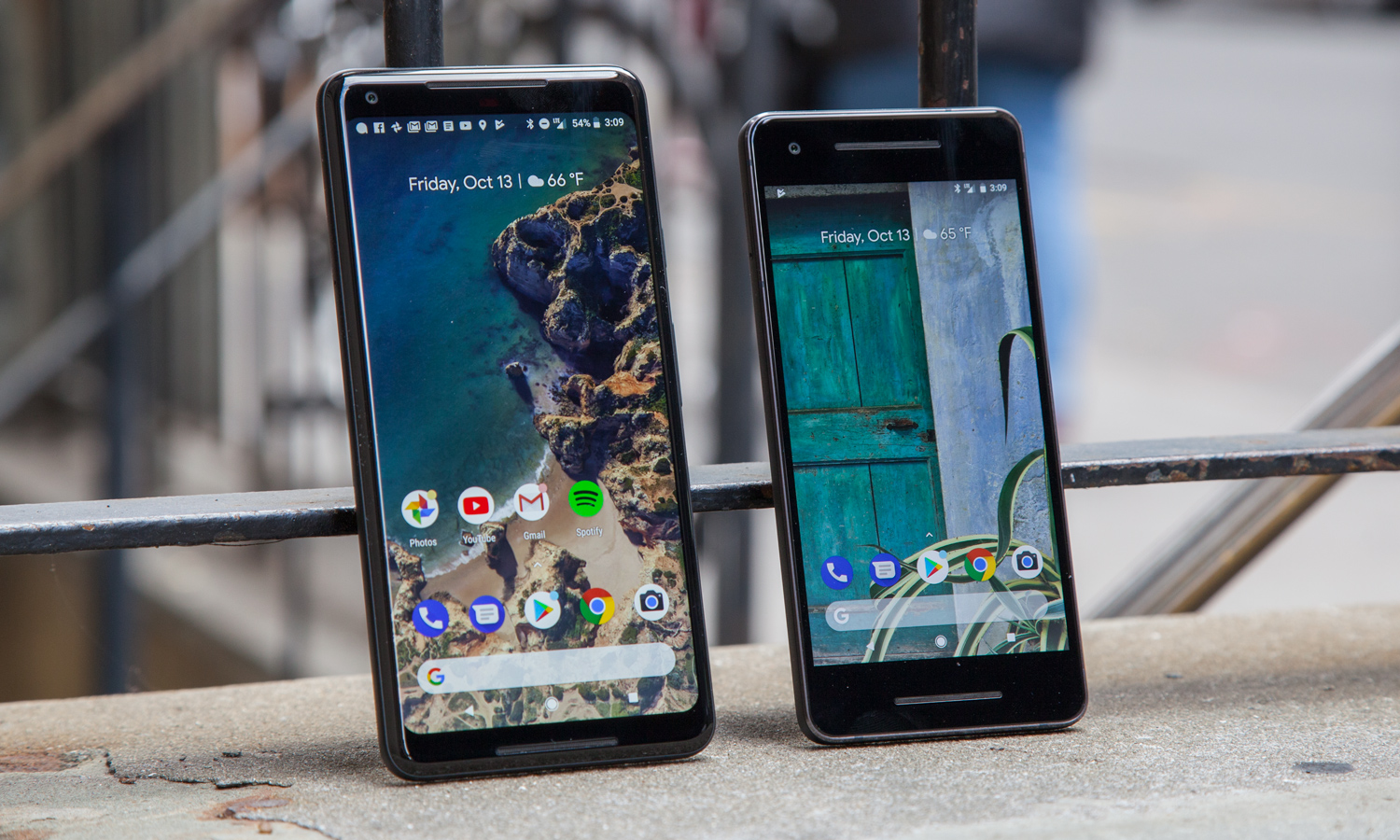
The two new handsets feature thin bezels at the top to encase the front-facing camera, but they're unobtrusive. That's in direct contrast to the smaller Pixel 2, which surrounds its 5-inch OLED display with bezels thick enough to house a fingerprint scanner (even though Google places that sensor on the back of its phone). The Pixel 2 XL sports slimmer bezels than its little sibling, but doesn't match the expected breadth of the S9 display, which extends to the edges and wraps around the sides of the phone, too. Just like the S8.

The S8 was dinged for the location of its fingerprint scanner, which is located next to the camera lens. That meant you might smudge your camera when aiming to unlock your phone. In a long-awaited move, Samsung has taken a page from the Pixel 2 and other Android flagships by putting the S9's fingerprint scanner below the camera lens.
The Pixel 2 lacks a headphone jack. Samsung took a different tack, hanging onto a jack for the S9. That feature alone sets the S9 apart from other premium flagships, as phones from Google, Apple and HTC have all eliminated the headphone jack.
Winner: Samsung Galaxy S9
Displays
As for the displays, both S9 models have Super AMOLED panels with ultrasharp 2960 x 1440-pixel resolution. The Pixel 2 XL has a similarly high-res display, while the smaller Pixel 2's OLED panel is 1920 x 1080. The Pixel 2 XL was the subject of widespread complaints about its screen, ranging from a strange blue tint when viewing at a certain angle to OLED burn-in. Google released a software update that somewhat addresses those issues, but it's still not perfect. Samsung's high-res, curved AMOLED displays have not experienced the same problems, and we haven't noticed any new ones during our time with the S9.
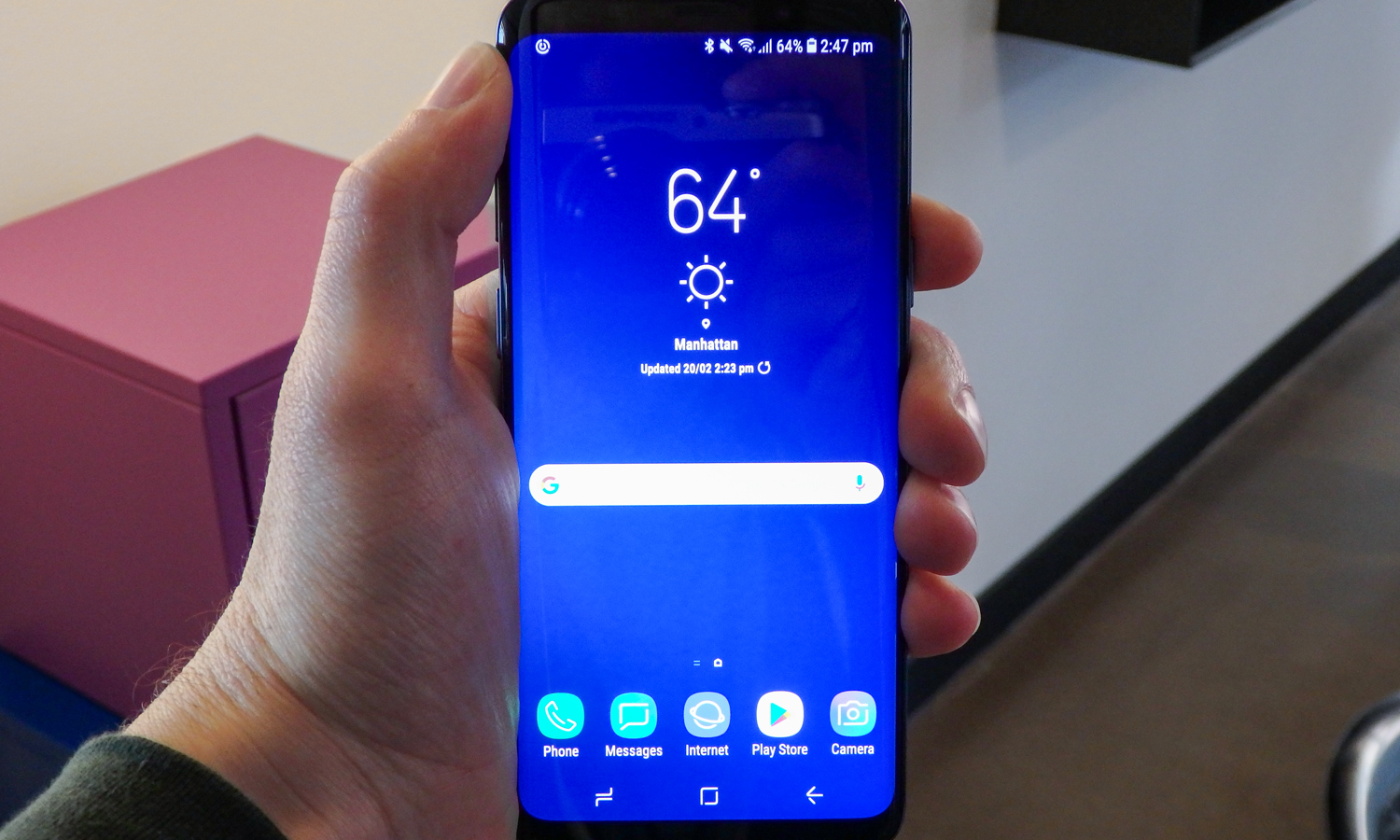
The S9 and S9+ have incredibly bright and colorful displays, and the differences between Samsung's latest devices and Google's Pixel 2 and Pixel 2 XL are stark. The S9 registered at 603 nits when we measured with a light meter, and it reproduced 220 percent of the sRGB color gamut. The S9+ performed even better (630 nits and a 231.2 percent sRGB score). Next to those phones, the Pixel 2 XL is positively muted. Google's larger phone covers just 120 percent of the color spectrum and registered 438 nits on our light meter.
The S9's display is the one we'd rather have.
Winner: Samsung Galaxy S9
Performance
Samsung is the first handset maker to use Qualcomm’s cutting-edge Snapdragon 845 mobile processor, which makes the S9 the fastest Android phone on the market at the time of its launch in March. The processor was also expected to make the S9 more efficient and extend its battery life, though we haven't noticed any significant improvements in battery life over the previous generation since getting our hands on the device.
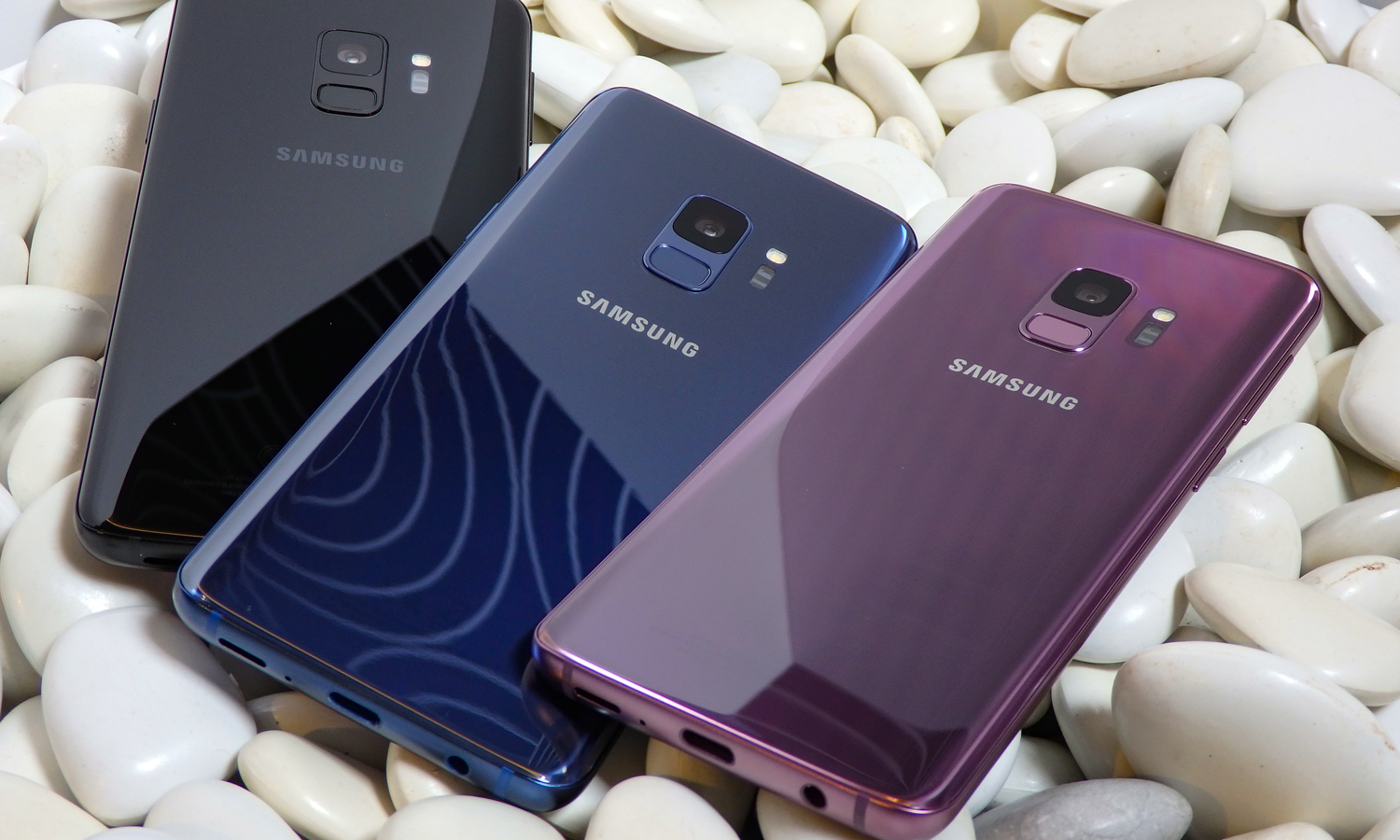
The Pixel 2 and Pixel 2 XL both have the last-gen Snapdragon 835 processor, like the S8 and S8+. The Pixel 2 lagged behind the Galaxy S8 in a Geekbench 4 performance test, but the Pixel 2 turned in a faster video-editing time than the Galaxy S8 and Note 8.
MORE: Best Smartphones on the Market Now
Not surprisingly, the Galaxy S9 has taken the performance crown from Google's phones. At 2 minutes, 32 seconds, the S9+ was 23 seconds faster than the Pixel when transcoding a 4K video clip to 1080p. However, Google's phone finished this task ahead of the Galaxy S9, which needed 3:29 to transcode the 2-minute clip. (The difference in performance between the two S9 models may have to do with memory. The S9+ packs in 6GB of RAM while the S9 matches the latest Pixel with 4GB.)
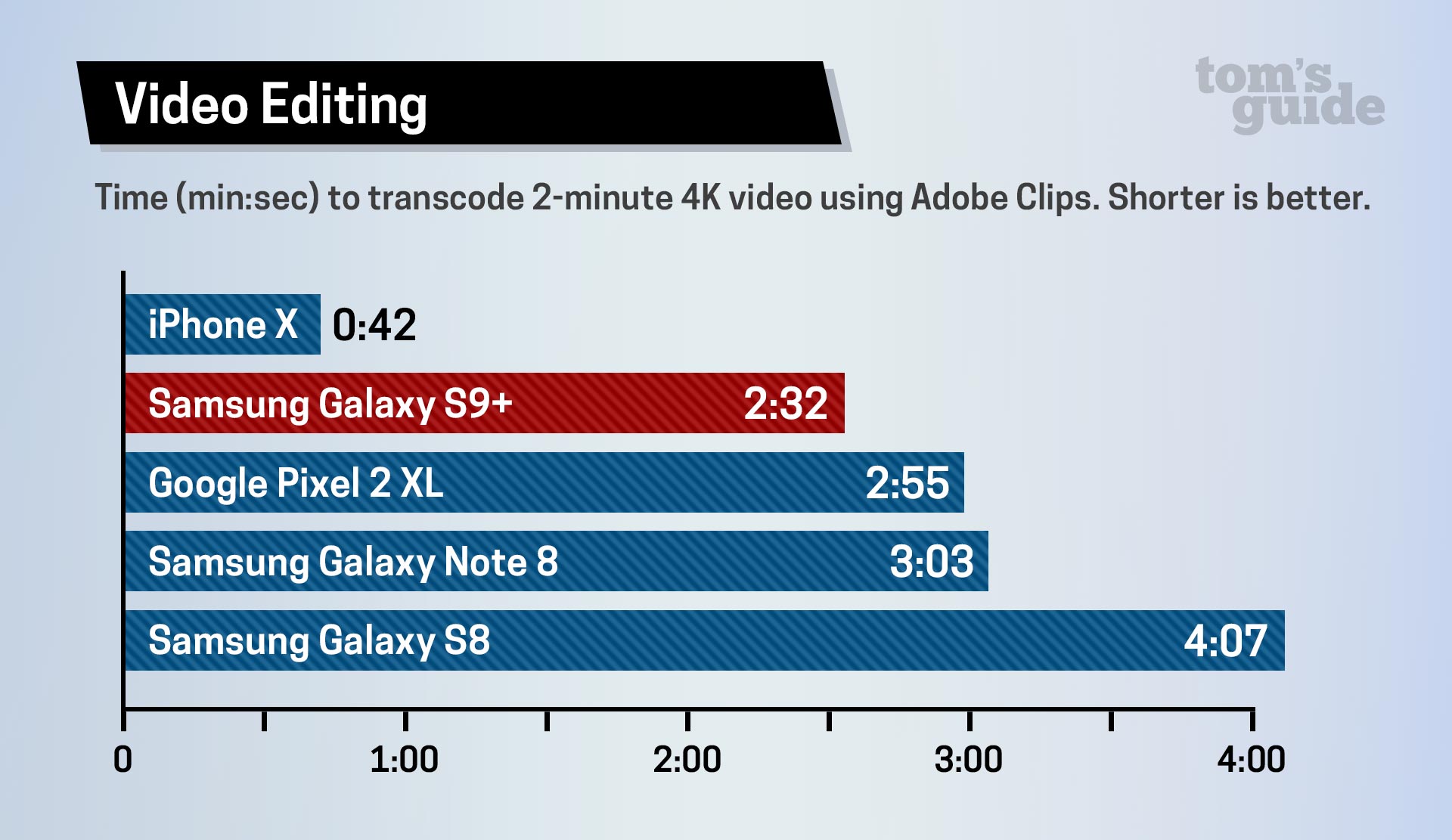
Both new Samsung phones bested the Pixel 2 XL in Geekbench 4, which measures general performance. The Galaxy S9+ is currently the fastest Android phone with a score of 8,295. The S9's score is lower, at 7,276, though that was still better than the Pixel 2 XL's 6,282 result.
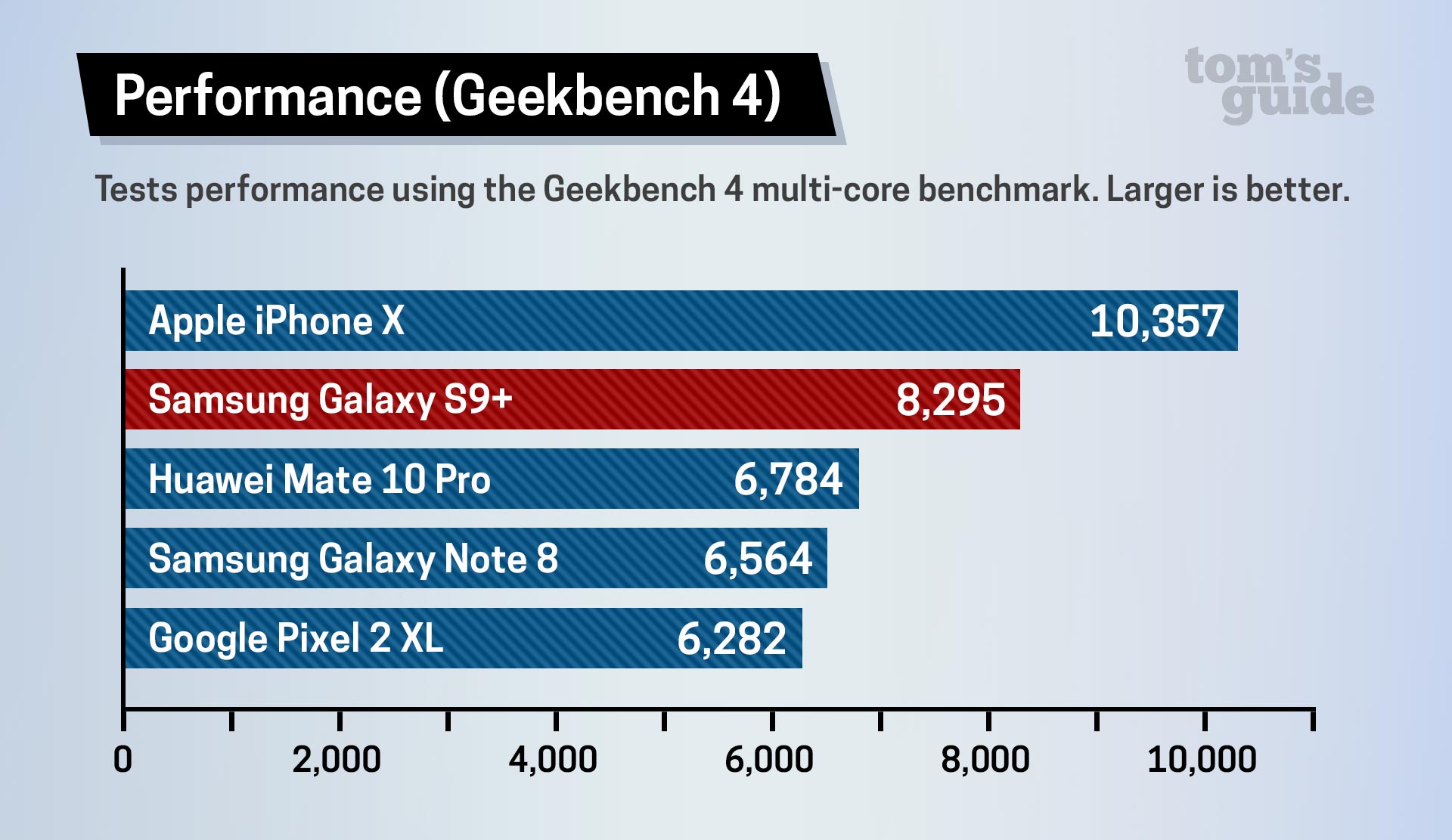
The latest Galaxy phones outperformed the Pixel 2 XL in graphics benchmarks, with the S9+'s score of 4,634 in 3DMark's Sling Shot Extreme well ahead of the Pixel 2 XL's 3,367.
In addition to the generally improved performance, the S9 also offers a way to expand storage beyond the built-in 64GB , with a microSD slot that can boost capacity by up to 400GB.
Winner: Samsung Galaxy S9
Battery Life
The Pixel 2 XL is still one of the longest-lasting flagship phones we've tested, delivering 12 hours and 9 minutes in our battery test consisting of endless web-surfing on T-Mobile LTE compared to 10 hours and 59 seconds from the Galaxy S9+. At 10:52, the S9 wasn't far off the pace set by its larger sibling.

Samsung has one advantage in that its phone is capable of wireless charging, but considering it's not the most efficient way to top up a device, we'd rather have the extra couple hours of longevity in Google's handset.
Winner: Google Pixel 2
Software and Special Features
Samsung and Google are working to differentiate their smartphones with voice-activated assistants.
The Pixel 2 and Pixel 2 XL have Google Assistant, activated by squeezing the devices' sides. Google Assistant taps into how you use Google's various services to answer your questions and provide you useful information. It's our favorite assistant when it comes to responding to contextual cues, and it's really good at figuring out what you mean even when you haven't chosen the best words for your query.
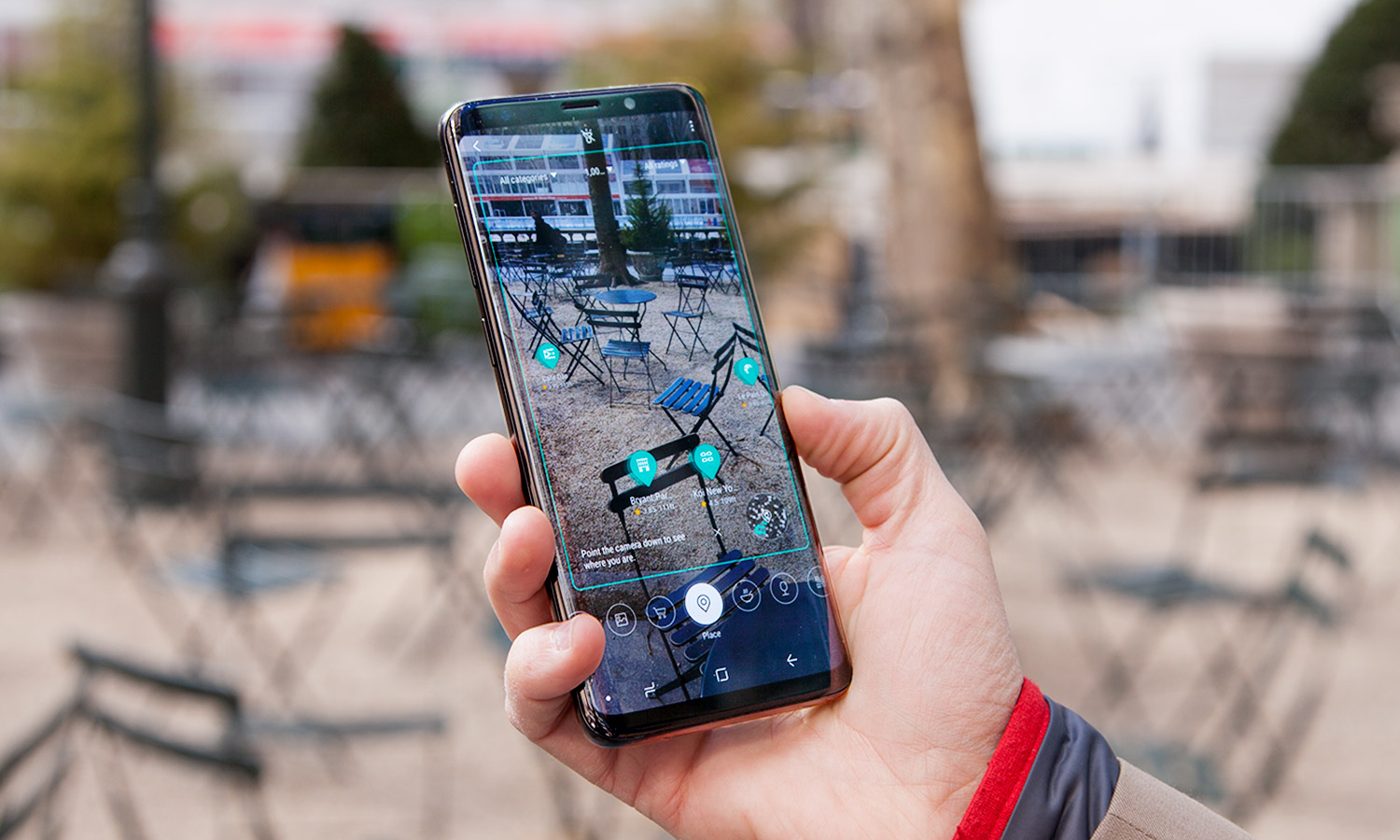
Samsung's Bixby isn't at that level yet — far from it, actually. But Samsung has reportedly worked to improve its assistant and make it more relevant in the S9 interface, instead of being a separate service that isn't well-integrated with the rest of the phone. Just like on the Galaxy S8, Bixby is triggered with its own side button on the S9, and even has a couple extra features like the ability to translate any text the camera sees, as well as a makeup mode built through a partnership with Sephora that lets users try on different products.
The Pixels also have smarter cameras with a feature called Google Lens that can recognize objects in photos and give you more information about them. The feature is currently rolling out to other Android phones via the Google Photos app, including the Galaxy S9 and S9+.

The Galaxy S9 has one last benefit for business users called the DeX Station, a terminal that connects to a monitor and effectively transforms a Galaxy S8, Note 8 or S9 into a makeshift desktop computer. The new DeX Station launched alongside Samsung's latest-generation flagships has a redesigned base that lies the phones flat, instead of standing them upright. The DeX Station runs $99.
Winner: Google Pixel 2
Value and Availability
The 5-inch Pixel 2 may start cheaper than the Galaxy S9, at $649 compared to $719, but that price advantage goes away if you're between the larger of these two models. The Pixel 2 XL begins at $849, while the Galaxy S9+ is actually $10 less expensive, at least if you buy it from Samsung or T-Mobile. And not only is the S9+ a smidge easier on your wallet, but both of Samsung's handsets are available on every major carrier as well as unlocked.
The Pixel 2 is only sold through Verizon; subscribers of other carriers will need to pick up the phone unlocked and then take it to their wireless provider, which is an extra step that Samsung doesn't force you to make. However, both companies allow you to save some cash by trading in your existing smartphone.
Winner: Samsung Galaxy S9
Bottom Line
When it comes to innovative AI features and having the best photography experience, the Pixel 2 is the smartphone we'd rather have. But Samsung has produced another jack of all trades with the Galaxy S9 and S9+, delivering a range of features in one sleek package you won't find anywhere else.
| Samsung Galaxy S9 and S9+ | Google Pixel 2 and Pixel 2 XL | |
| Design (10) | 9 | 7 |
| Display (15) | 14 | 10 |
| Cameras (20) | 16 | 19 |
| Performance (10) | 9 | 7 |
| Special Features (10) | 7 | 9 |
| Battery and Charging (20) | 15 | 17 |
| Value (15) | 13 | 11 |
| Overall (100) | 83 | 80 |
No other phone aside from LG's V30 has a dual lens camera, wireless charging, a MicroSD slot for expandable storage, IP68 water resistance and an 18:9 OLED display. And once you toss in the S9 and S9+ superior design and state-of-the-art performance, the decision becomes even easier. The Pixel 2 is excellent in certain respects, but Samsung's latest flagships are more complete handsets overall.
Credit: Tom's Guide
Caitlin is a Senior editor for Gizmodo. She has also worked on Tom's Guide, Macworld, PCWorld and the Las Vegas Review-Journal. When she's not testing out the latest devices, you can find her running around the streets of Los Angeles, putting in morning miles or searching for the best tacos.
